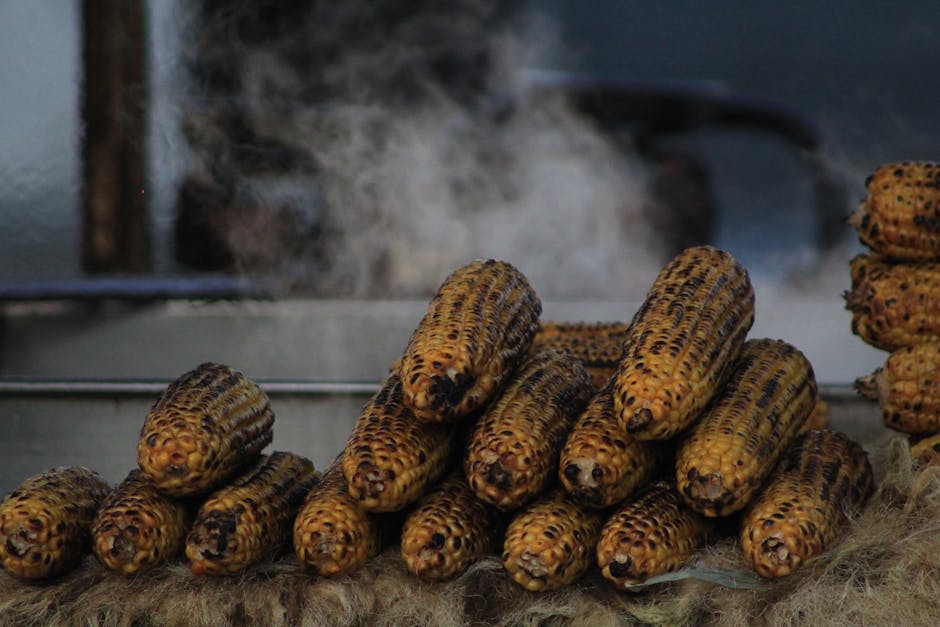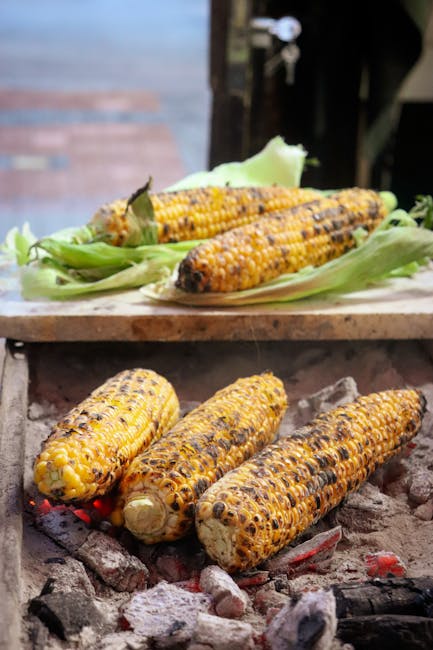How to Cook Corn on the Cob: The Ultimate Guide to Sweet, Juicy Perfection
Corn on the cob—the quintessential summer treat. But achieving that perfect balance of sweet, tender kernels and a slightly charred exterior requires a bit more finesse than simply throwing it on the grill. This comprehensive guide will walk you through various methods, from grilling and boiling to microwaving and roasting, ensuring you always get delicious results, no matter your cooking style or equipment.

Choosing the Perfect Corn
Before you even think about cooking, selecting the right corn is crucial. Look for ears with tight, green husks. The husks should be moist, not dry and brown. Feel the kernels—they should be plump and firm, not soft or shriveled. Avoid ears with silks that are dark brown or black, as this indicates age and potential dryness. The heavier the ear, the more likely it is to be plump and juicy. Ideally, cook corn as soon as possible after purchasing it for the best flavor.

Preparing the Corn
Once you’ve selected your perfect corn, it’s time to prepare it for cooking. This involves removing the silks and husks. While some methods involve leaving the husks on, for most techniques, removing them is necessary. Gently peel back the husk and remove the silks. You can use a sharp knife or your fingers. Rinse the corn under cold water to remove any loose debris or silks that might remain.
Cooking Methods: A Corn Lover’s Guide
1. Grilling Corn on the Cob
Grilling corn gives it a delicious smoky flavor and slightly charred exterior. Here’s how to do it perfectly:
- Preheat your grill to medium-high heat.
- If desired, soak the corn in water for about 15 minutes before grilling for added moisture.
- Place the corn directly on the grill grates, turning occasionally, for about 10-15 minutes, or until the kernels are tender and slightly charred.
- For extra flavor, brush the corn with butter, olive oil, or a flavorful marinade before grilling.
2. Boiling Corn on the Cob
Boiling is a simple and quick method for cooking corn, perfect for large batches or when you’re short on time:
- Bring a large pot of salted water to a rolling boil.
- Add the corn and boil for 5-7 minutes, or until the kernels are tender.
- Immediately transfer the corn to an ice bath to stop the cooking process and retain its vibrant color. This also helps to maintain a slightly firmer texture.
3. Microwaving Corn on the Cob
Microwaving is a convenient method, especially for a quick meal or single serving:
- Place the corn in a microwave-safe dish with a few tablespoons of water.
- Microwave on high for 3-5 minutes, turning halfway through, or until the kernels are tender.
- If desired, cover the corn with a damp paper towel to prevent drying out.
4. Roasting Corn on the Cob
Roasting enhances the corn’s natural sweetness and creates a slightly caramelized flavor:

- Preheat your oven to 400°F (200°C).
- Place the corn in a roasting pan, optionally brushing with olive oil or melted butter.
- Roast for 20-25 minutes, turning halfway through, or until tender and slightly browned.
5. Steaming Corn on the Cob
Steaming is a gentle method that preserves the corn’s sweetness and nutrients:
- Fill a steamer basket with water and bring to a boil.
- Place the corn in the steamer basket and cover. Steam for 8-10 minutes, or until tender.
Tips for Perfect Corn on the Cob
Here are some additional tips to ensure your corn on the cob is always a success:
- Don’t overcook: Overcooked corn will be mushy and lose its flavor. Cook until tender but still slightly firm.
- Season generously: Experiment with different seasonings! Butter, salt, pepper, chili powder, garlic powder, herbs—the possibilities are endless.
- Serve immediately: Corn on the cob is best served fresh and hot. Its flavor and texture degrade quickly after cooking.
- Use a good quality knife: A sharp knife makes removing the silks and husks much easier and more efficient.
- Consider adding herbs and spices: Try incorporating fresh herbs like cilantro or basil, or spices like paprika or cumin for a flavorful twist.
Beyond the Basics: Creative Corn Dishes
Once you’ve mastered the basics of cooking corn on the cob, you can explore countless creative ways to incorporate it into your dishes. Corn can be grilled, boiled, or roasted, then used in salads, salsas, chowders, and more. Let your creativity shine and experiment with new flavors and combinations!
From simple grilling techniques to more elaborate roasting methods, there’s a way to cook corn on the cob that suits every palate and kitchen. With these tips and tricks, you’re well on your way to preparing delicious, juicy, and perfectly cooked corn every time. Happy cooking!

